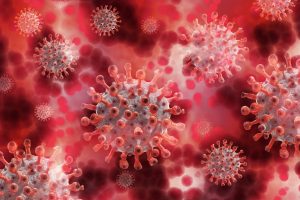Studies from 2022, 1, 2 highlight the emergence of new-onset Alzheimers in older adults (>85) who contracted COVID-19. Patients with existing Alzheimer’s Disease (AD) are also more prone to infection by SARS-COV-2. 2
SARS-Cov-2 infects cells via the spike protein which attaches to ACE2 receptors following activation by TMPRSS2 which allows cellular entry. 2
New studies reveal potential of the virus to invade the Central Nervous System (CNS), causing symptoms such as brain inflammation and cognitive impairment. 2 The presence of viral RNA has been found in the brains of more than half German patients who died of COVID-19. 2 Brain imaging studies reveal the presence of hemorrhage and changes in brain structure of patients who contracted SARS-CoV2, even milder cases. 2 This evidence confirms that SARS-CoV2 has the ability to enter the CNS and cause neurological conditions. 2
CNS infection may cause neuroinflammation, Blood Brain Barrier (BBB) disruption, altered cognition, closely related to neurodegeneration. 2
SARS-CoV2 may be transported to the CNS by the olfactory route, infecting the nasal cavity and then being transported to other neuronal cells. 2
SARS-CoV2 infection of the lungs can be transferred to the blood circulation, due to damaged blood vessel walls. 2 Once in the blood it can enter the cerebral circulation via the BBB. 2 Evidence of this is found in autopsy studies, revealing that the virus disrupts the BBB. 2 In the brain, the virus activates inflammation increasing BBB permeability, and facilitating increased viral entry. 2
People with AD are more likely to have increased permeability and disruption of the BBB. 2 Once the virus enters the brain, infection and neurological symptoms occur. 2
ACE2 has been recognised as the main host cell receptor for SARS-CoV2 infection. 2 ACE2 expression is increased in the hippocampus of people with AD, indicating a direct relationship between ACE2, AD and viral infection. 2
Ageing is the greatest risk factor for AD and SARS CoV2 infection. Ageing causes diminished immune defence including increased ACE2 receptors, increased cholesterol which enhances the spike protein attachment to ACE2. 2 Ageing is associated with impairment of the BBB, and alters levels of neuroinflammation – a characteristic of AD pathology. 2
Research indicates that the virus is more likely to cause damage to the CNS due to existing immune dysfunction and neuroinflammation within the CNS. 2
SARS-CoV2 aggravates existing AD by increasing neurotoxicity, increasing levels of Ab plaque, inflammation and oxidative stress. 2
References:
Association of COVID-19 with New-Onset Alzheimer’s Disease
The COVID-19 pandemic and Alzheimer’s disease: mutual risks and mechanisms

